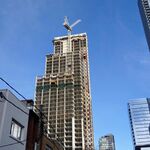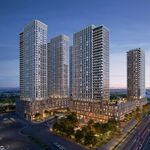Tim MacDonald
Senior Member
July 30





Lol what? It’s a highway bridge which is 80 years old and which it’s entire purpose is to be driven across. It’s not even like they will be demolishing it either, simply repairing it. I’m not sure any piece of infrastructure would last 80 years without rehabilitation regardless of how few cars are driving over it.Maybe the bridge would of lasted longer if there wasn't so much car dependent sprawl forcing people to drive across it.
In the good old days, when it was the Kings Highways 2 and 5 that handled traffic to destinations west of Toronto, it was decided in 1934 that building a highway to handle the expanding transportation needs of the province with a population 3.5 million was required. As of 2019 the population of Ontario stood at 14.5 million and that of the GTA alone - in excess of 6.7 million. And apparently this is not enough, projections are that GTA populations will reach 7.45 million within 10 years, because in part, we have not reached our countries ’optimum’ (?!) population level - somewhere around 55 million people. Transit options are not happening quickly enough to handle that growth, car dependent transit between the growing and intensifying urban areas serviced by the QEW will continue. I can see the bridges (they are being twinned) being rehabilitated at intervals for years to come.Maybe the bridge would of lasted longer if there wasn't so much car dependent sprawl forcing people to drive across it.
In the good old days, when it was the Kings Highways 2 and 5 that handled traffic to destinations west of Toronto, it was decided in 1934 that building a highway to handle the expanding transportation needs of the province with a population 3.5 million was required. As of 2019 the population of Ontario stood at 14.5 million and that of the GTA alone - in excess of 6.7 million. And apparently this is not enough, projections are that GTA populations will reach 7.45 million within 10 years, because in part, we have not reached our countries ’optimum’ (?!) population level - somewhere around 55 million people. Transit options are not happening quickly enough to handle that growth, car dependent transit between the growing and intensifying urban areas serviced by the QEW will continue. I can see the bridges (they are being twinned) being rehabilitated at intervals for years to come.
Maybe. Transit improvements are needed most places. However in this instance, you are now just west of a major light rail project (Hurontario), one bridge to the south is the GO Lakeshore line, and one bridge to the north is Dundas and the potential of a BRT development. These three projects have the potential to deliver improved transit options to commuters such as myself, although I am heading for the airport area many days and that is still not automatically enticing when coming from the west of the GTA.They should provide space for a dedicated future transit line...
The Finch West LRT will help with that coming from east of Pearson, but hopefully Mississauga gets a better east-west link than the Transitway soon.Maybe. Transit improvements are needed most places. However in this instance, you are now just west of a major light rail project (Hurontario), one bridge to the south is the GO Lakeshore line, and one bridge to the north is Dundas and the potential of a BRT development. These three projects have the potential to deliver improved transit options to commuters such as myself, although I am heading for the airport area many days and that is still not automatically enticing when coming from the west of the GTA.
I may have answered my own question. Excerpted from a NSBA White Paper. Incremental launching.
Crews preassembled 400-ft sections of the steel superstructure, which consisted of steel plate girders, bolts and cross-bracing. Four hydraulic cylinders powered each bridge section across the land-based track rollers on the higher abutment, forming a giant cantilever until the section reached the temporary rollers on the piers. A kingpost frame in the assembly area provided a cable-stay to the end of the bridge section.
Drum, I would agree with you, we need some of our Drone Artists to post a flyover.Aug 7
The drome folks need to try to get a closer look at the bridge as it hard to see it on the ground.
There are 4 girders making up a 4 section bridge with crossing bracing in place. At the west end, there are 2 sections of girders with bracing between to 2 girders that are smaller with lug holes.
Cannot see any rollers under the bridge nor hydraulic equipment to push the bridge. With lugs at the end of the 2 section temporary bridge extension. cables will come from a puller on the west side of the river to pull the bridge over the river when time comes to do it.
Crews were working on site to get ready for the next 4 girders section that should be arriving this week.
NopeGonna try for a low altitude pass tomorrow night. Winds look a little high for tonight.
@drum118 was that you walking by the QEW pushbox yesterday at 1130am? I was just getting off the QEW then and saw a gentleman with a dslr in hand.




